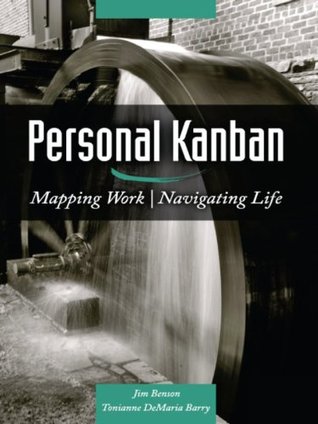More on this book
Community
Kindle Notes & Highlights
5 Good leaders provide enough management oversight to give a clear and coherent idea of vision and purpose, but not to the extent that they micromanage. They ensure employees have the information they need to make good decisions, and then step back to let the good decisions happen.
Use anything that allows you to take the abstraction of “work I have to do” from inside of your head and put it in front of your eyes. There are no sanctioned steps, no official kits, and no certifications. You just have to be able to get your Personal Kanban into a place where your work is accessible and obvious.
. This seemingly minor disconnect causes all sorts of problems. It’s difficult to plan for what you don’t understand. I’ve seen team members at each other’s throats simply because they all had a slightly different idea of how the team collectively created value. Since they couldn’t agree on how their team worked, everything they did was based on a slightly different context. This meant there was always something slightly (or not so slightly) off with their planning.
With its tendency to seek out patterns to process meaning, the brain becomes preoccupied with missing pieces of information. Unfinished tasks vie for our attention, causing intrusive thoughts that ultimately impede productivity and increase the opportunity for error.
The Zeigarnik Effect fosters a psychic tension which has a toxic interaction with fears or worries lying around in our psyche. What results is an anxiety feedback loop that can preclude sleep, impact health and for some, become psychologically or physically debilitating. This is that existential overhead we discussed earlier that causes us to be less effective.
So what’s the easiest and most effective way around these tasks? Go through them. Get them off your plate. Get the work done.
Capacity is an ineffective measure of throughput, and a horrible way to gauge what we can do. It doesn’t measure how we actually work, or at what rate we actually work. Capacity is merely a brute force measure of what will fit.
The more a system relies on a core mechanism to force action, the less sustainable it becomes. Push systems tend to cause bottlenecks by ignoring natural capacity. Work is released downstream whether or not the worker has the capacity to process it. In a push system, capacity problems are discovered after the fact. Work begins to pile up and, as it grows, can easily escalate into an emergency. Because it relies on committing to up-front guesses and does not anticipate the extra work, the push system can only react through costly and lagging responses like overtime, emergency hires, and delay.
...more
. We need to give ourselves credit for laying the groundwork for these peak experiences. If we don’t acknowledge the things that put us in the zone, we dismiss peak experiences as happy accidents, mere flashes of unexpected brilliance. These experiences don’t have to be a rarity, quite the opposite, in fact. Once we understand what causes peak experiences, we can increase their frequency and duration,
Mere productivity is never a good investment. Effectiveness is far more valuable.
Our goal is to strike a balance between being productive, efficient, and effective. What tasks or goals would you pull to achieve happiness? To exercise your talents and expertise? To bring you satisfaction and joy? What tasks reward you simply by doing them? What pushes you to do things that don’t make you happy? What trade-offs are necessary to achieve balance? How can you remove friction from your life?
Value drives how we prioritize: we choose tasks with higher value first. Sometimes our priorities become apparent through flow and not through fixed quadrants. Both value and prioritization evolve with context.
A-listers were successful not because they had superior programming skills, but because they took the time to learn why they were building the software in the first place. They sought clarity from the onset, gathering vital information and incorporating it into their design. If the pertinent information wasn’t readily available, they used deductive reasoning to devise a plan to obtain it. Once they found clarity, they had the freedom to innovate and the ability to outperform their colleagues.
A-list artistry is not born of technical prowess, but of clarity of purpose.1
We generate our own emergencies by overextending ourselves and then addressing those tasks only when they become dire. Visualizing our work helps us appropriately channel our efforts by not letting us hide unattractive tasks in the recesses of our minds. Without visualization, prioritization is reactionary and thoughtless. Our actions gravitate towards the emergency du jour. We repeat this fatalistic and self-defeating process until soon everything presents itself as urgent. After a while, we begin to assume that this is just the nature of life.


